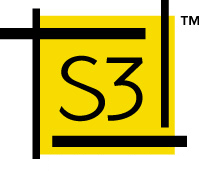Problems With Compression
 There
are two major problems that compression will have to face. First off, game developers
must be willing to write games that take advantage of this algorithm, meaning
that some games that use it may be almost unplayable on cards where S3TC is
not supported. The second matter of concern is that texture sizes will just
keep growing. As games become more realistic and game play becomes more interactive,
texture and scene sizes are bound to grow. This was seen with the introduction
of Quake III Arena. The original GeForce 256 DDR running 3.xx series drives
would choke under heavy loads in Quake III. This was due to the fact that the
large, complex scenes being rendered were using the system's RAM as a storage
area, meaning that data had to travel from the GPU down the slow AGP bus path.
The introduction of S3TC compression eliminated this problem in Quake III Arena,
however it is very likely that the next generation of games will once again
push the limits of a 32 MB memory storage system. Even with S3TC compression
in future games, common sense tells us that texture and scene sizes will continue
to grow and push the limits of even a compressed 32 MB memory system.
There
are two major problems that compression will have to face. First off, game developers
must be willing to write games that take advantage of this algorithm, meaning
that some games that use it may be almost unplayable on cards where S3TC is
not supported. The second matter of concern is that texture sizes will just
keep growing. As games become more realistic and game play becomes more interactive,
texture and scene sizes are bound to grow. This was seen with the introduction
of Quake III Arena. The original GeForce 256 DDR running 3.xx series drives
would choke under heavy loads in Quake III. This was due to the fact that the
large, complex scenes being rendered were using the system's RAM as a storage
area, meaning that data had to travel from the GPU down the slow AGP bus path.
The introduction of S3TC compression eliminated this problem in Quake III Arena,
however it is very likely that the next generation of games will once again
push the limits of a 32 MB memory storage system. Even with S3TC compression
in future games, common sense tells us that texture and scene sizes will continue
to grow and push the limits of even a compressed 32 MB memory system.
When this occurs, and it will, texture swapping will become a problem once again. When the compressed data overflows from the card's memory, the slow AGP path will have to be traveled just as it was in the past. And, just as it was in the past, the path will remain extremely slow compared to the on card memory bus path.
With this in mind, there is only one way to overcome the problem for a longer period of time. That is by increasing on card memory size.










0 Comments
View All Comments